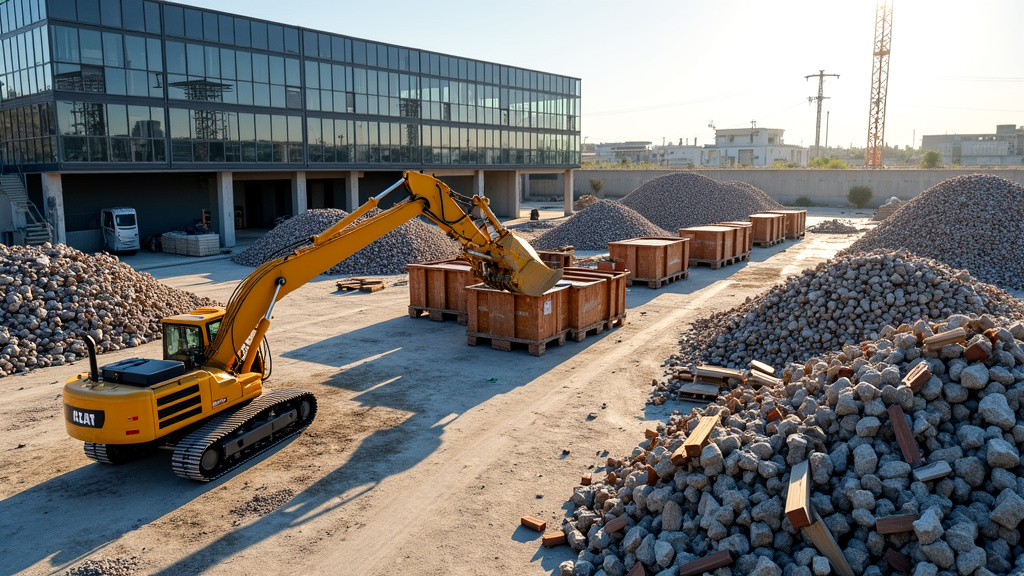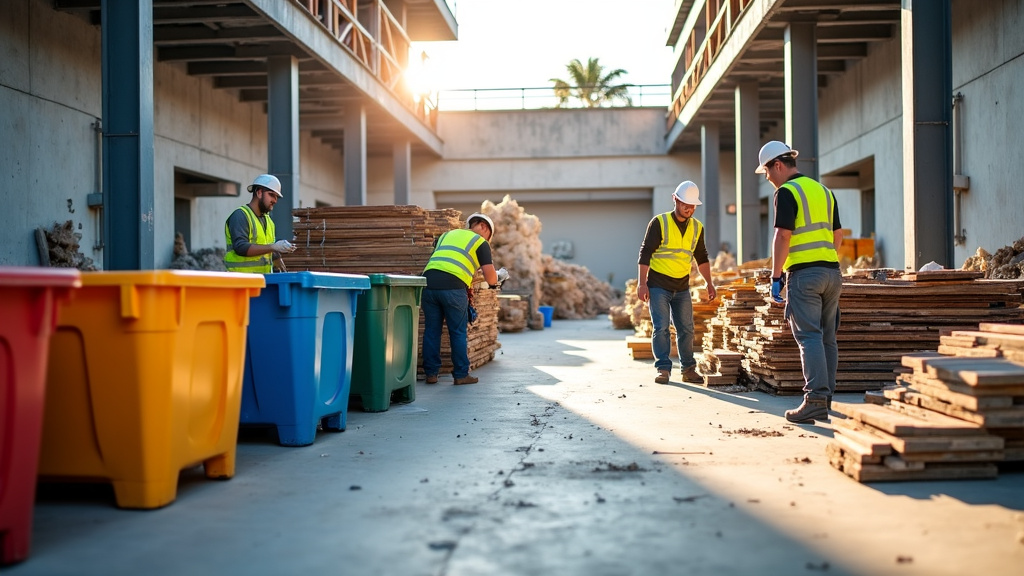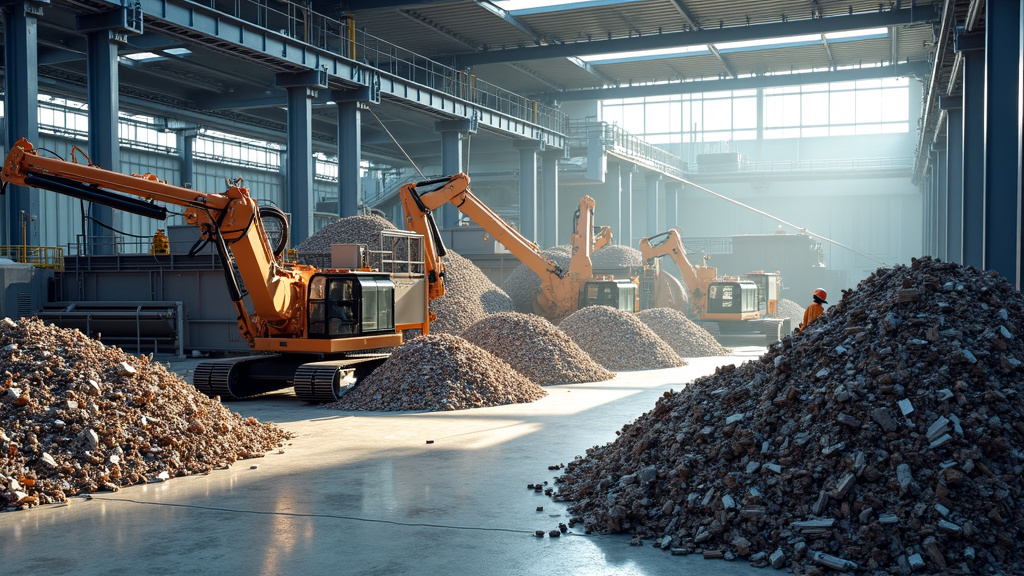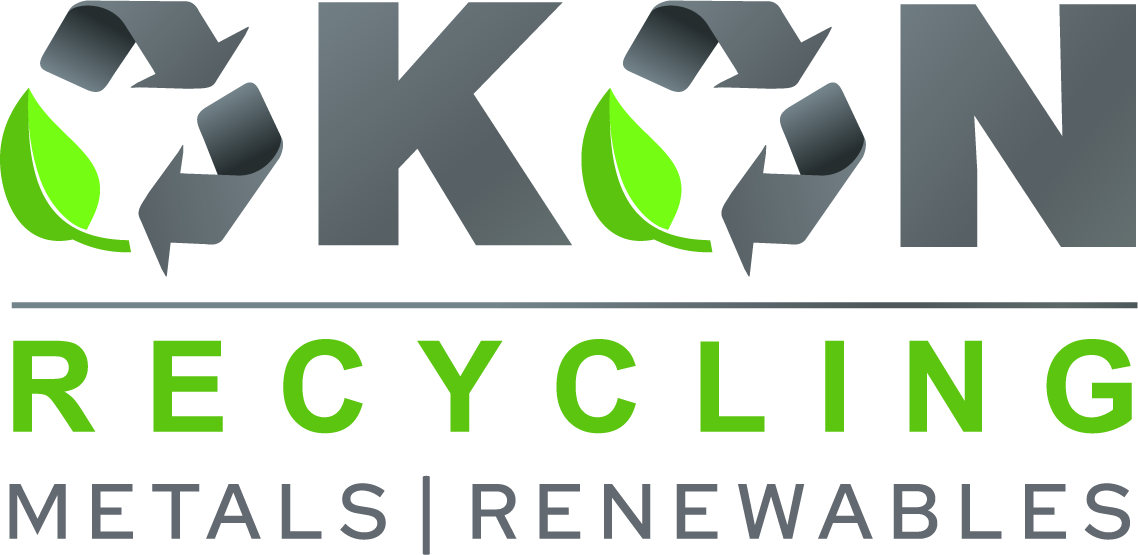5901 Botham Jean Blvd, Dallas, TX 75215
Can I Recycle Mixed Construction Waste?
March 27, 2025Have you ever considered the environmental impact of debris left after a construction project? The answer may surprise you. Recycling mixed construction waste isn’t just feasible—it’s essential for building a more sustainable future. But is it really possible to recycle the varied materials from your latest renovation or build?
The construction industry generates a vast amount of waste annually, much of which ends up in landfills. However, with increasing environmental concerns and stricter regulations, recycling mixed construction waste has become a necessity.
From concrete and wood to metals and plastics, construction sites are full of recyclable materials. According to the Environmental Protection Agency, reusing and recycling construction and demolition materials can be more cost-effective than disposal, potentially saving money while conserving natural resources.
But how can you effectively manage the complexities of mixed construction waste recycling?
The Importance of Recycling Construction Waste

The construction industry significantly impacts our environment. Construction and demolition (C&D) waste constitutes nearly one-quarter of the national waste stream, highlighting the crucial need for recycling to achieve a more sustainable future.
Recycling construction waste is not just environmentally beneficial; it is a powerful sustainability tool with multiple advantages. Diverting materials from landfills preserves space and reduces harmful methane emissions from decomposing organic materials. In 2018 alone, C&D recycling prevented 4,300 acres of landfill filled to a depth of 50 feet.
Moreover, recycling construction waste conserves our planet’s finite resources. Extracting and processing raw materials for construction is energy-intensive and environmentally damaging. Recycling materials like concrete, steel, and wood reduces the demand for virgin resources, minimizing environmental degradation and energy use.
Economic Benefits of Construction Waste Recycling
Recycling construction waste also offers significant economic benefits. Recycled materials are often cheaper than virgin materials, helping to reduce overall project costs.
Efficient waste management can lead to lower disposal costs and potential revenue from selling recyclable materials. For instance, recycled steel, which forms a substantial part of C&D waste, is in high demand. An impressive 98% of steel from construction and demolition projects is recycled, demonstrating the economic potential of proper waste management.
The construction industry is also embracing innovative technologies and practices that enhance the economic benefits of recycling. Building Information Modeling (BIM) software allows for precise material ordering, reducing waste from the start and potentially lowering project costs.
Sustainability and Environmental Responsibility
Recycling construction waste is key to environmentally responsible building practices. It’s about fundamentally rethinking resource use in construction. By adopting recycling, the industry can significantly reduce its carbon footprint and support global sustainability efforts.
For example, recycling steel prevents the release of nearly 950 million tons of CO2, equivalent to the emissions from burning about 280 million tons of coal. These statistics underscore the significant impact of widespread construction waste recycling on our planet’s health.
As regulations around waste management and environmental protection tighten, companies prioritizing recycling and sustainable practices are better positioned for long-term success. They are not just meeting current standards but also preparing for future environmental regulations.
Best Practices for Recycling Mixed Construction Waste

Recycling mixed construction waste has become essential for responsible builders. By implementing smart recycling strategies, construction firms can significantly reduce their environmental impact while potentially cutting costs. Here are some proven methods to transform your construction site into a model of sustainability.
Mastering On-Site Sorting: The First Step to Effective Recycling
Successful construction waste recycling begins on the job site. Effective on-site sorting is crucial for maximizing the amount of material that can be recycled or reused.
Designate specific areas for different types of waste materials. Set up clearly labeled containers for wood, metal, concrete, plastics, and general waste. This simple step can dramatically increase your recycling rates.
Train your workers to identify recyclable materials and sort them correctly. Consider appointing a ‘recycling champion’ on each shift to oversee the process and ensure compliance. The success of your recycling program hinges on the participation of every team member.
Partnering with Specialized Recycling Facilities: Amplifying Your Recycling Efforts
While on-site sorting is crucial, partnering with specialized recycling facilities can enhance your waste management. These facilities have the expertise and equipment to handle a wide range of construction materials, often recycling items that might otherwise end up in landfills.
Research local recycling facilities that specialize in construction waste. Look for partners that can handle the specific types of waste your projects generate. Some facilities might even offer on-site collection services, streamlining your waste management process.
Track the amount of waste diverted from landfills. This data can be valuable for meeting sustainability goals and potentially qualifying for green building certifications.
Educating Workers: The Cornerstone of Successful Waste Management
Even the best-designed recycling program will fall short without proper education. Investing time in training your workers about waste management practices increases recycling rates and leads to a cleaner job site.
Conduct regular training sessions on proper waste sorting and the importance of recycling. Ensure all workers, including subcontractors, understand your waste management policies and procedures. Use visual aids like posters or infographics to reinforce key messages.
Encourage feedback from your team. Workers on the ground often have valuable insights into how to improve recycling processes. By fostering a culture of sustainability, your entire team will become more invested in waste reduction efforts.
Implementing a Step-by-Step Recycling Program
Ready to enhance your construction site’s recycling efforts? Follow this step-by-step guide to implement an effective recycling program:
- Conduct a waste audit to understand the types and quantities of waste your site generates.
- Set up clearly labeled recycling stations around your site.
- Partner with specialized recycling facilities capable of handling your waste streams.
- Train all workers on proper sorting techniques and the importance of recycling.
- Appoint recycling champions to oversee the program on each shift.
- Regularly monitor and track your recycling rates.
- Celebrate successes and continually look for ways to improve your program.
By following these best practices, you’ll be well on your way to minimizing waste, reducing costs, and building a more sustainable future for the construction industry. Remember, every piece of material recycled is a step towards a cleaner, greener planet.
How Okon Recycling Can Help with Mixed Construction Waste

The construction industry generates an astounding 600 million tons of debris annually in the United States alone. This significant waste challenge calls for innovative solutions, and Okon Recycling leads in addressing this environmental need. With over a century of experience, Okon has honed its expertise in handling mixed construction waste, offering a beacon of hope for sustainable building practices.
Okon’s approach to mixed construction waste is both comprehensive and nuanced. Their state-of-the-art facilities are equipped with advanced sorting technologies that efficiently separate diverse materials found in construction debris.
Environmental Impact and Economic Benefits
The environmental benefits of Okon’s services are clear and far-reaching. By diverting construction metals from landfills, they help conserve valuable land resources. Their recycling processes significantly lower the carbon footprint associated with construction waste, contributing to broader climate change mitigation efforts.
But the advantages aren’t just environmental. The U.S. Environmental Protection Agency reports that recycling construction and demolition materials can create 20% more jobs than simply dumping them in landfills. By partnering with Okon, construction companies can contribute to local economic growth while enhancing their sustainability profile. In regions with high landfill tipping fees, recycling through Okon can also lead to substantial cost savings for construction projects.
The Future of Construction Waste Recycling
The future of construction waste recycling lies in embracing a circular economy model. This approach views demolition not as an endpoint, but as the beginning of a new cycle. Materials from old structures become the building blocks for new ones, significantly reducing the industry’s environmental footprint and reliance on virgin resources.
Companies like Okon Recycling are leading this transformation, showing that sustainable practices can coexist with economic viability. By partnering with experienced recycling experts, construction firms can comply with stricter environmental regulations and gain a competitive edge in an increasingly eco-conscious market.
The time for action is now—contact Okon Recycling at 214-717-4083 to explore how you can transform your construction waste into an opportunity for positive change.
